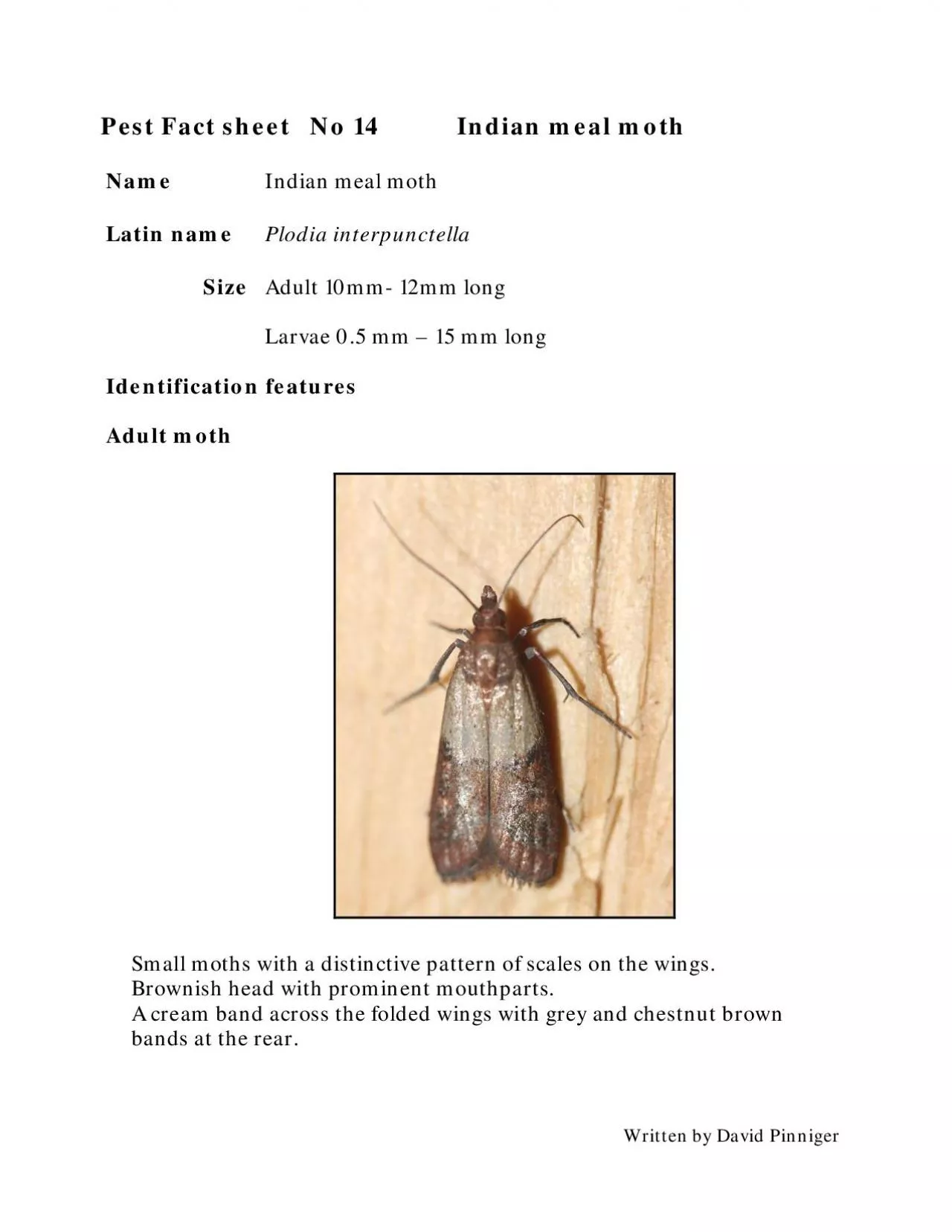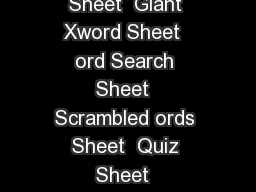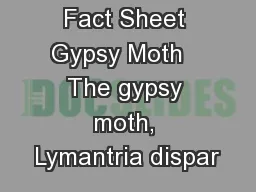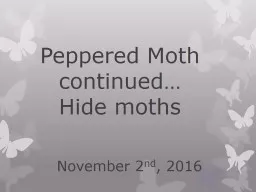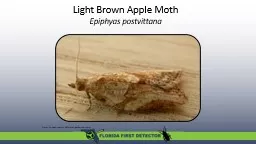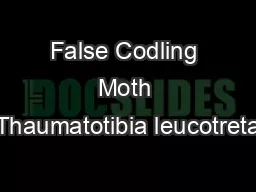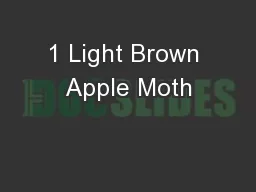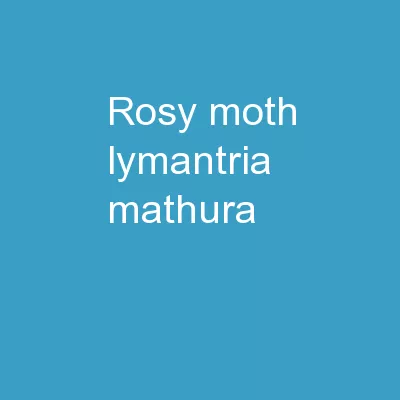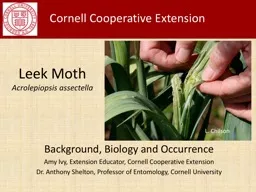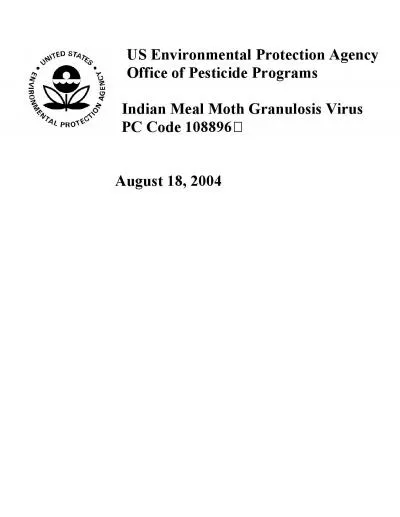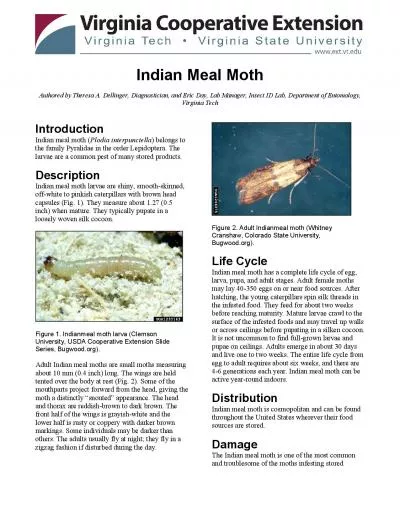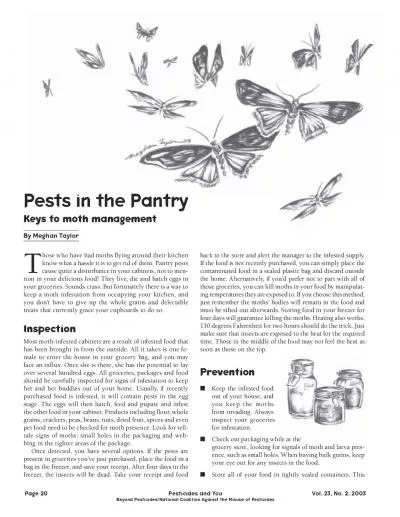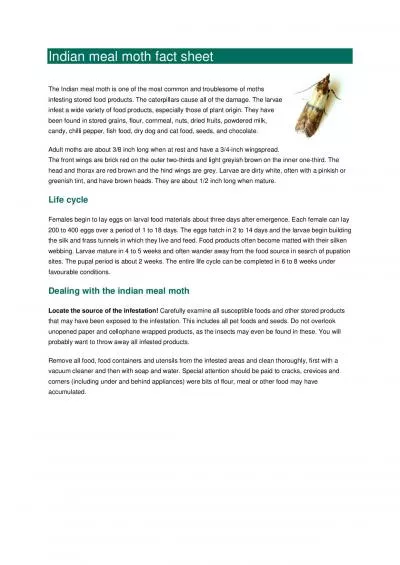PDF-Pest Fact sheet No Indian meal moth
Author : wang | Published Date : 2022-08-31
Name Indian meal Latin name Plodia interpunctella Size Adult 10 mm 12 mm long Larvae 05 mm mm long Identification features mall moths with a distinctive pattern
Presentation Embed Code
Download Presentation
Download Presentation The PPT/PDF document "Pest Fact sheet No Indian meal moth" is the property of its rightful owner. Permission is granted to download and print the materials on this website for personal, non-commercial use only, and to display it on your personal computer provided you do not modify the materials and that you retain all copyright notices contained in the materials. By downloading content from our website, you accept the terms of this agreement.
Pest Fact sheet No Indian meal moth: Transcript
Download Rules Of Document
"Pest Fact sheet No Indian meal moth"The content belongs to its owner. You may download and print it for personal use, without modification, and keep all copyright notices. By downloading, you agree to these terms.
Related Documents

